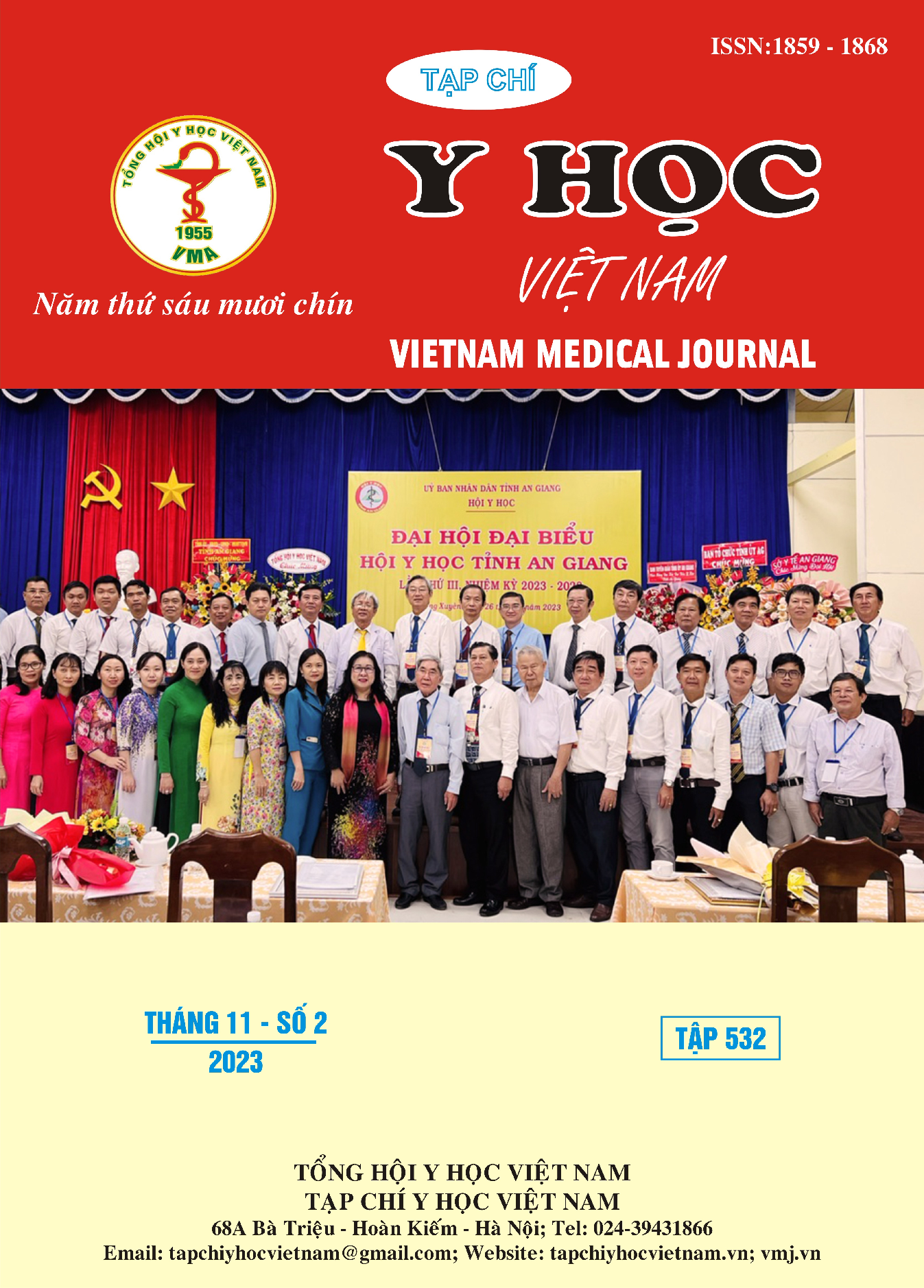ASSESSMENT OF THE EFFECTIVENESS OF THE METHOD “SELF MANAGEMENT OF PAIN” IN PATIENTS WITH CHRONIC LOW BACK PAIN DUE TO LUMBAR DISC HERNIATION
Main Article Content
Abstract
Objective: To initially evaluate the results of pain self management (PSM) method in the treatment of chronic low back pain in patients with disc herniation. Methods: interventional, retrospective combined with prospective, controlled study on 82 patients with chronic low back pain caused by lumbar disc herniation, being treated at the Neurology Department of Military Hospital 103 from September 2022 to May 2023; they were divided into two groups: the study group consisted of 41 patients with basic medical treatment combined with the “pain self management” method and the control group consisted of 41 patients with basic medical treatment. Results: At discharge, the difference in VAS score in the study group was 5.17 ± 1.2 and in the control group was
4.17 ± 1.18 (p<0.05); the difference of OSWESTRY score in the study group was 50.0 ± 10.1 and in the control group was 32.0 ± 16.2 (p < 0.05); The difference of the ZUNG score in the study group was
17.9 ± 4.2 and in the control group was 7.6 ± 5.6 (p
< 0.05). Conclusion: it was initially assessed that the method of “pain self management” was significantly effective to support the medical treatment in improving pain severity, lumbar spine dysfunction and anxiety disorders in patients with chronic low back pain due to disc herniation.
Article Details
Keywords
disc herniation, chronic low back pain, Pain self management
References
đệm cột sống thắt lưng tại bộ môn - khoa Nội thần kinh, Bệnh viện 103 - Học viện Quân Y: Số liệu thu thập trong 10 năm gần đây (2004 - 2013) với 4718 bệnh nhân. Tạp chí Y dược học Quân sự 2015. 3: p. 5-16.
2. National Guideline Centre UK, Low back pain and sciatica in over 16s: assessment and management. 2016.
3. Vijan, S., S. Manaker, and A. Qaseem, Noninvasive treatments for acute, subacute, and chronic low back pain. Annals of Internal Medicine, 2017. 167(11): p. 835-836.
4. Hooff, M.L.v., et al., Daily functioning and self- management in patients with chronic low back pain after an intensive cognitive behavioral programme for pain management. 2010. 19: p. 1517-1526.
5. H. S. Chhabra, Sunil Sharma, and Shalini Verma, Smartphone app in self-management of chronic low back pain: a randomized controlled trial. European Spine Journal, 2018. 27(11): p. 2862-2874.
6. Mary Ersek, Results of a randomized controlled trial to examine the efficacy of a chronic pain self- management group for older adults [ISRCTN11899548]. 2008. 138(1): p. 29-40.
7. Ganji, R., et al., The Effect of Self-Management Educational Program on Pain Intensity in Elderly Patients with Knee Osteoarthritis: A Randomized Clinical Trial. Open Access Maced J Med Sci, 2018. 6(6): p. 1062-1066.
8. O. Hägg, P. Fritzell, and A. Nordwall, The clinical importance of changes in outcome scores after treatment for chronic low back pain. European Spine Journal, 2003. 12(1): p. 12-20.


